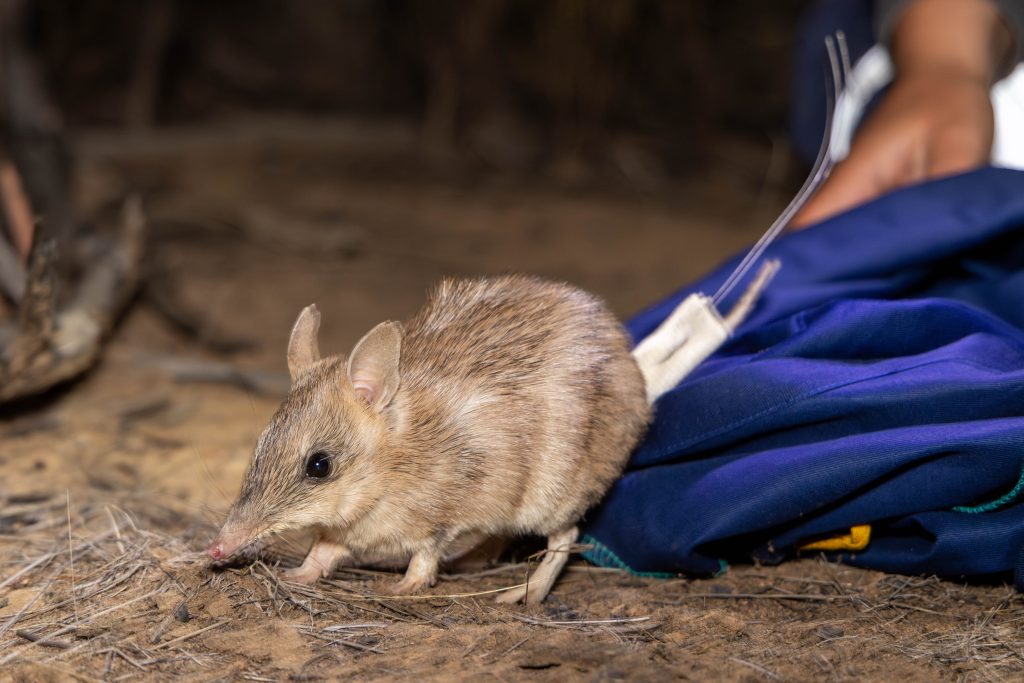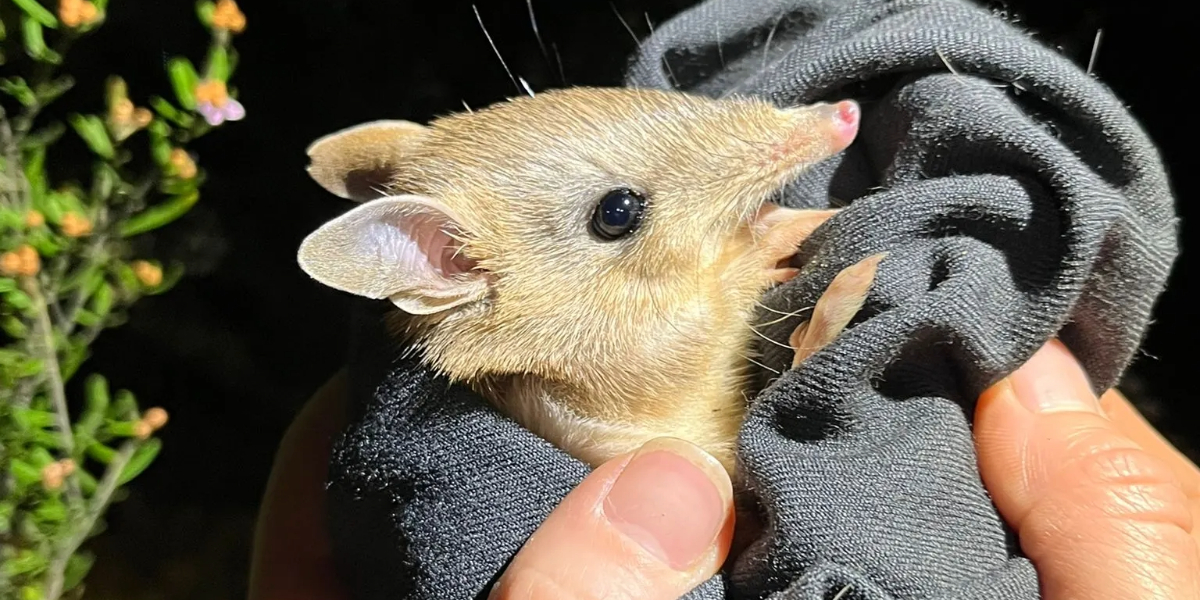Nearly two years after their return to the wilds of north-western NSW, the endangered Shark Bay Bandicoot is thriving in its new home within the Pilliga State Conservation Area. A recent motion-sensor camera image showing a mother bandicoot with three young at foot has delighted ecologists and confirmed that the species is successfully breeding in the region.
The reintroduction of the Shark Bay Bandicoot—also known as the Western Barred Bandicoot or Marl—marks a significant milestone in the Australian Wildlife Conservancy’s (AWC) broader project to restore at least six regionally extinct mammals to a 5,800-hectare feral predator-free exclosure in the Pilliga, developed in partnership with the NSW National Parks and Wildlife Service (NPWS).
“It definitely made our day seeing the photo of the three young bandicoots scurrying to keep up with their mum,” said Maisie Duffin, AWC Field Ecologist. “We were sifting through thousands of motion sensor camera images when we came across that gem.
“Aside from being completely adorable, it gave us great confidence that the bandicoots are breeding and that the population in the Pilliga is growing.”
Nicknamed by the team as Bandicutes, the Shark Bay Bandicoot was once widespread across arid and semi-arid Australia, but the species now survives only on a few predator-free islands off the Western Australian coast.
Its reintroduction to NSW in August 2023 involved flying 66 individuals over 3,000 kilometres from Western Australia to the Pilliga—a region where the bandicoot had been absent for more than 150 years. Habitat destruction and the arrival of feral predators such as cats and foxes led to its local extinction.
Post-release monitoring has been promising. During a trapping survey in August 2024, ecologists captured 85 bandicoots—44 of them born in the Pilliga. Notably, over two-thirds (68%) of the female bandicoots were found to be in breeding condition, lured by bait balls of peanut butter, oats and fish.

“Having been involved in the initial reintroduction of Shark Bay bandicoot to the Pilliga, it is exciting to see them now breeding—a promising sign that they are well on their way to establishing a viable, self-sustaining population,” said David Kelly, Manager, Threatened Species, NPWS.
The Pilliga project forms part of the largest feral predator-free area on mainland Australia, designed to safeguard vulnerable species from the threat of invasive animals. The conservation fence—measuring 32.1 km long—creates a secure sanctuary where native species can be carefully reintroduced and monitored.
The Shark Bay Bandicoot plays a vital ecological role as an ecosystem engineer. Through digging for fungi and invertebrates, they help aerate soil, disperse seeds, and recycle nutrients—contributions that enhance biodiversity and soil health.
Ongoing monitoring, including the continued use of motion-sensor cameras, will help ecologists track the bandicoot population and adjust management strategies as needed.
The success of the Shark Bay Bandicoot’s reintroduction offers a hopeful glimpse into the future of threatened species recovery in Australia. With continued support and strategic conservation, these small but significant creatures may yet reclaim their place in the nation’s landscapes.
For more information about AWC’s work in the Pilliga, and across Australia, you can visit their website.
Don’t miss any of the important stories from around the region. Subscribe to our email list.

